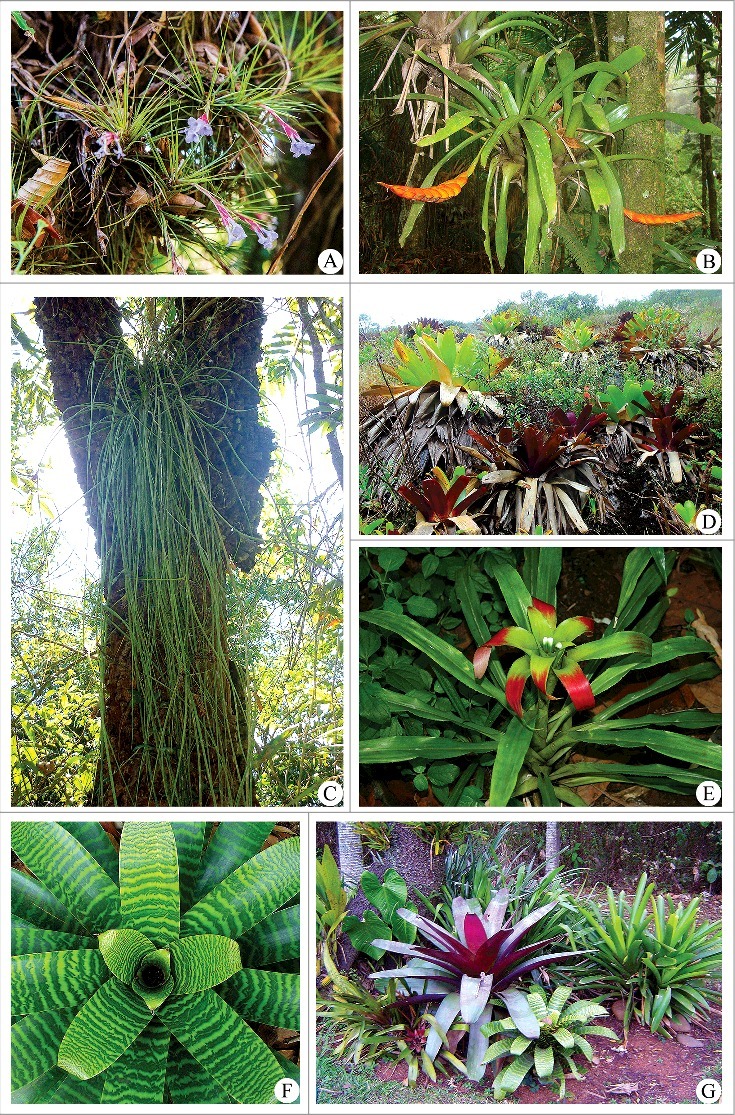Figure 4.

Natural populations and ornamental characteristics of bromeliads from the Brazilian Atlantic rainforest. (A) Tillandsia tenuifolia L. growing in the State Park of Intervales (Ribeirão Grande, São Paulo), where minimum and maximum average annual temperatures are approximately 9 and 29°C, respectively.277 (B) Vriesea inflata (Wawra) Wawra growing in the Biological Reserve of “Alto da Serra de Paranapiacaba” (Santo André, São Paulo), where temperatures may vary from 2 to 32°C.278 (C) Acanthostachys strobilacea (Schult. f.) Link, Klotzsch & Otto growing in the Biological Reserve and Experimental Station of “Mogi-Guaçu” (Mogi-Guaçu, São Paulo), where the minimum and maximum average annual temperatures are approximately 11 and 30°C, respectively.277 This species also occurs in Cerrado areas. (D) Alcantarea imperialis (Carrière) Harms growing in an inselberg at the National Park of “Serra dos Órgãos” (Teresópolis, Rio de Janeiro). Temperatures at this site may vary from -5 up to 38°C.279 (E) In situ conservation of Nidularium minutum Mez in the Biological Reserve of “Alto da Serra de Paranapiacaba”. (F) A specimen of Vriesea hieroglyphica (Carrière) E. Morren with a tank formed by overlapping of broad leaves that allows water storage from the rain. (G) Ornamental aspect of the foliage of tank-forming bromeliads. Photo credits: (A) Suzana Ehlin Martins; (B) Camila Freitas; (C) Victória Carvalho; (D) Luciana Mollo; (E) Camila P. Carvalho; (F, G) Catarina C. Nievola.
